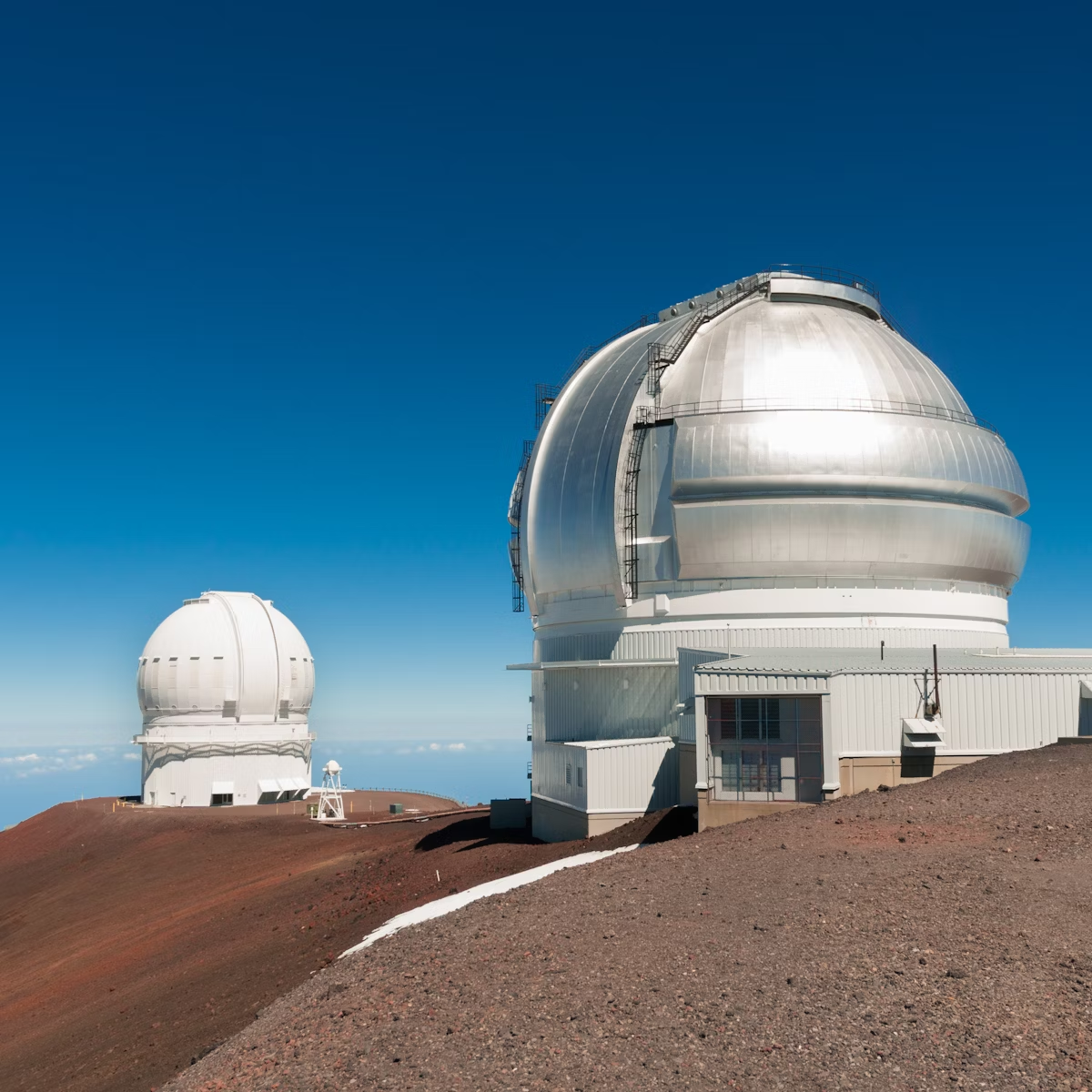Mirrors larger than 26.2ft are so heavy that gravity distorts them as they move. Keck's breakthrough design overcame that limitation in 1993 by using a series of 36 hexagonal mirror segments mounted and independently adjusted that function as a single piece of glass 32.8ft in diameter. The results were so good, they built Keck II next door in 1996. Visitors are welcome into the gallery, which has brief displays, public restrooms and views inside the Keck I dome.
The addition of Atmospheric Optics, a mirror that flexes 670 times per second to compensate for distortions in the air, combined with new laser technology makes Keck's images more crisp than the space-based Hubble Telescope.
By measuring the expansion of the universe through the speeds of supernovae using Keck, scientists found evidence for dark energy, a discovery that earned them the Nobel Prize in 2011. In 2013, scientists using Keck I discovered the most distant galaxy ever observed, a whopping 13.1 billion light years away.








